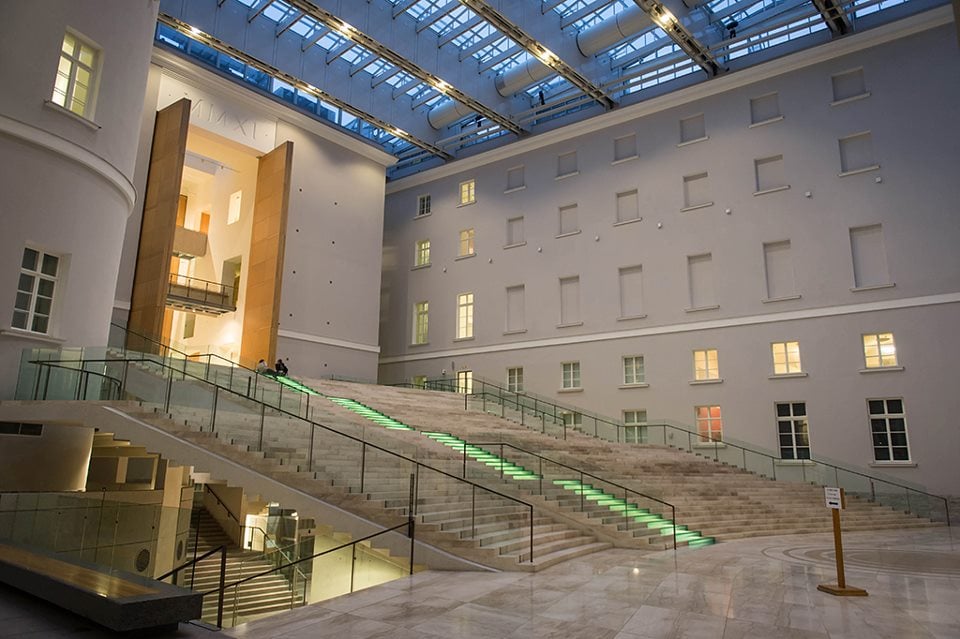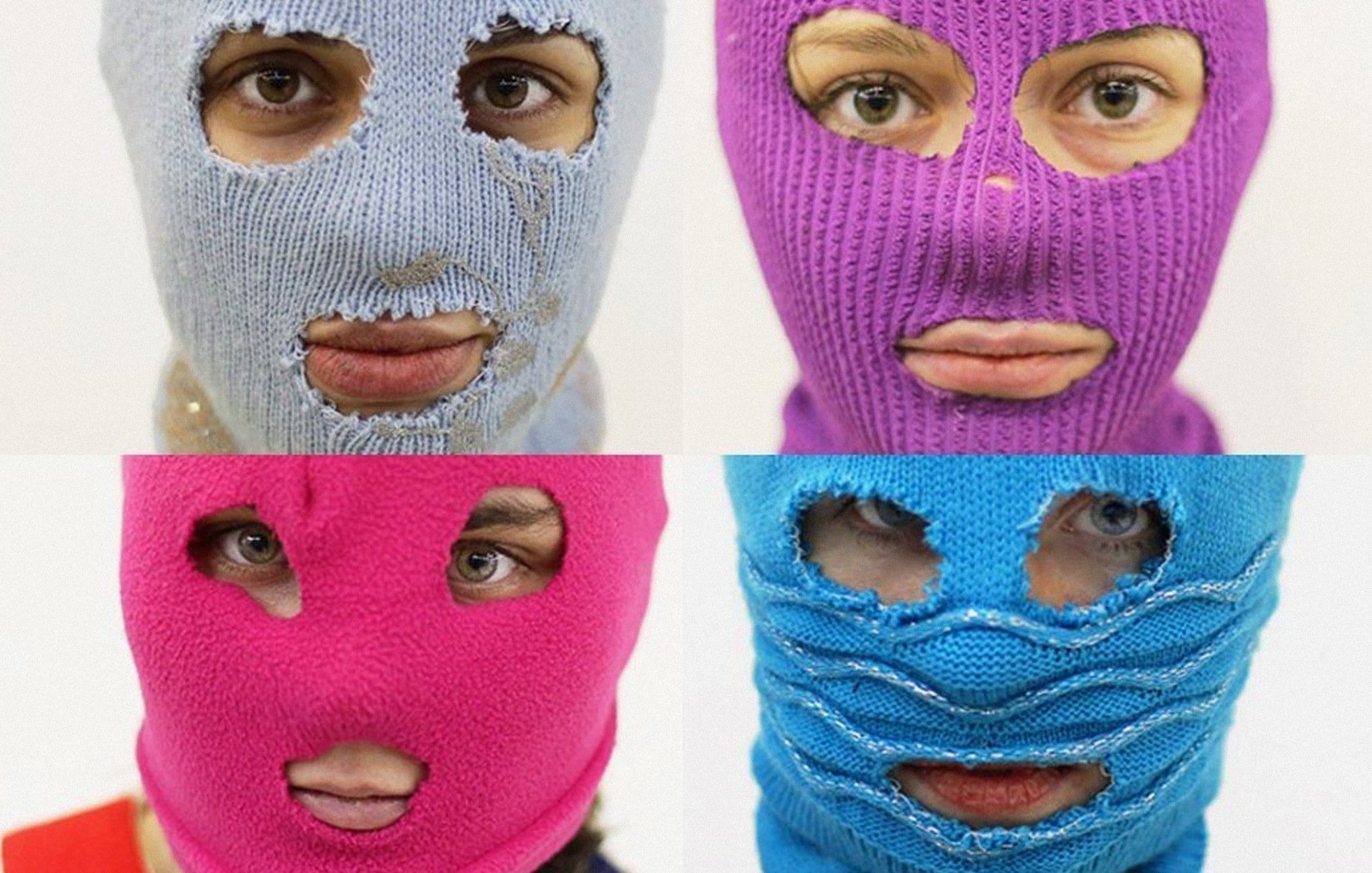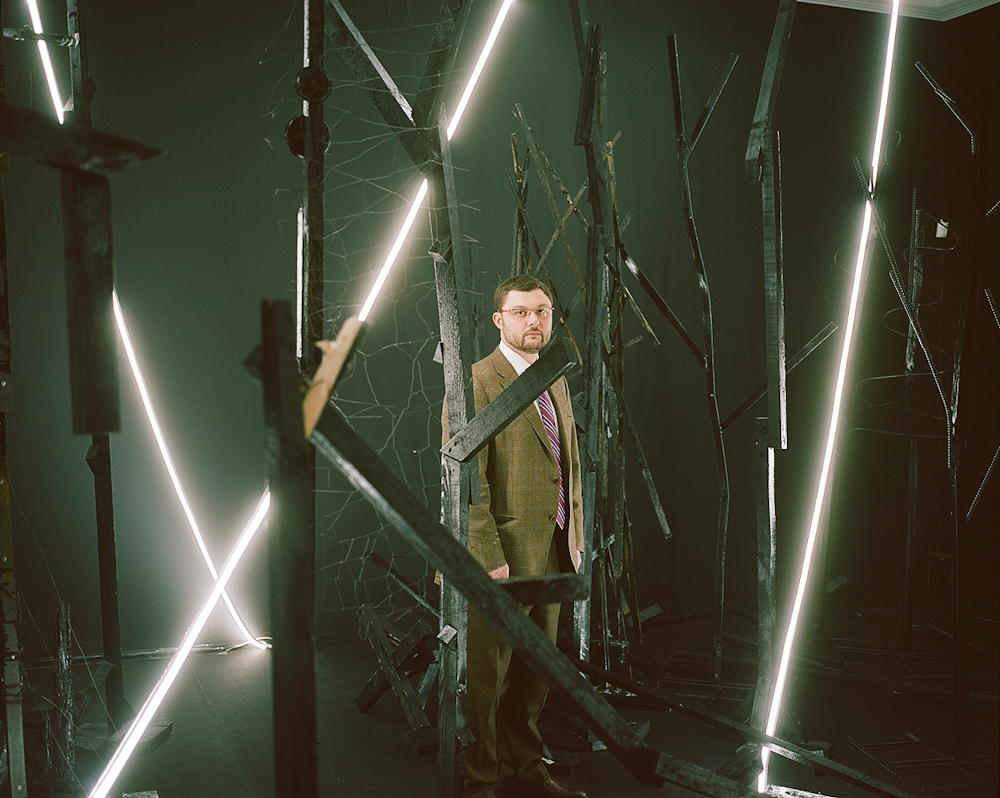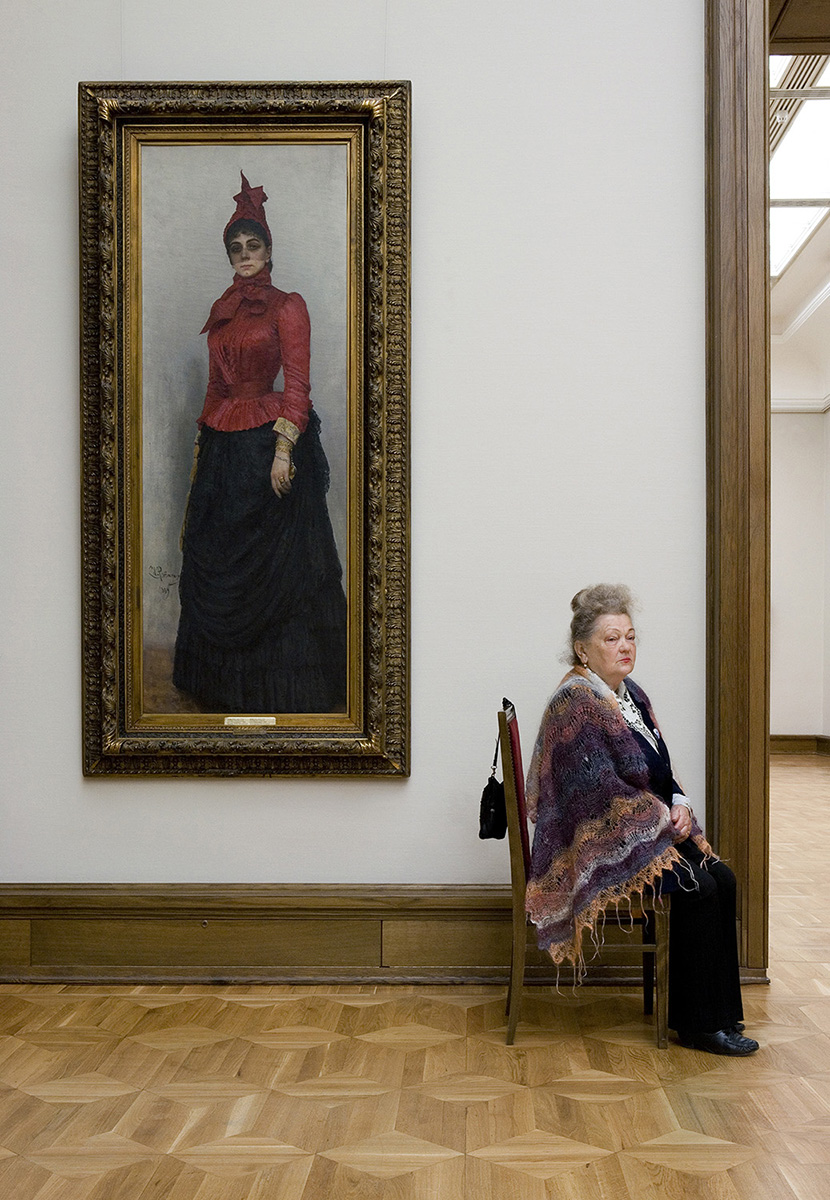The modernist: curator Dmitry Ozerkov wants to reinvent the role of art in Russia. Can he succeed?

Will a new contemporary art wing make the Hermitage — or break it?
It is a gloomy autumn day in central St Petersburg. A huge crowd of neatly attired Japanese pensioners gathers on Palace Square. They are standing by the entrance to the Hermitage, Russia’s most important treasury of ancient and classical art. A Russian guide is booming out commands in Japanese.
Across the square is the General Staff building, a vast former military headquarters built in 1829, currently being refitted by the museum to house its burgeoning collection of 20th- and 21st-century art. The renovated space will be unveiled in three stages, becoming fully accessible to the public by 2014 — just in time to commemorate the Hermitage’s 250-year anniversary.
Opening a contemporary wing marks a sea change for a cultural institution as conservative as the Hermitage. The man leading the plans is Dmitry Ozerkov, curator of the Hermitage 20/21 project. Ozerkov, 36, began his career at the museum 12 years ago, looking after 15th- to 18th-century French engravings. Over that time, and supported by a handful of specialists, he has been staging an insurgent effort to transform the lacklustre image of museums in Russia.
Ozerkov came to attention with the exhibition USA Today in 2007, a provocative showcase of American contemporary art from the collection of Charles Saatchi. The show caused a big stir in the culturally prudish Russian press. Works such as Terence Koh’s Big White Cock, a neon rooster that evokes a seedy sex shop sign, and Dash Snow’s Fuck the Police, semen-covered newspaper cuttings, triggered outrage among conservative commentators.

Ozerkov, whose attire exudes a casual elegance, remembers the furore fondly. “We brought in artworks with blood and sperm in them, all these nasty things, and this was in the Hermitage,” he recalls. “We weren’t trying to insult or offend anyone, although lots of people were insulted purely formally. USA Today was meant to seriously challenge society. We needed an emotional shake-up because we’ve got a serious problem: people don’t want and don’t know how to look at contemporary art.”
At the time of writing, a full-scale refurbishment is underway. The glittering atrium, with its high, partly glass ceiling, resembles a futuristic mix of pompous palace and high-tech airport. The hall is filled with dust and workers shouting in different languages as preparations gets underway for The End of Fun, an exhibition by British artists Jake and Dinos Chapman, featuring sculpture, prints and installations that explore politics and religion — hot-button topics in a country where artworks examining either have been known to spark stormy debate.
Alongside glass cases containing miniature figures torturing and killing each other, the Chapman brothers showed Disasters of War, a series of drawings inspired by a set of Goya works bearing the same name. “The Chapmans’ work is heavily influenced by Goya, so we showed Goya’s drawings next to their works,” says Ozerkov. “They chime together.” The marriage of a Spanish painter from the end of the 18th century with artists from the beginning of the 21st prompts the question of whether Ozerkov’s modernisation project is successfully revitalising the Hermitage or diminishing its illustrious history?
“Lots of people say, ‘Stay away from our Hermitage, it’s for the old masters.’ The old masters are this cultural sacred cow that you’re not allowed to touch,” says Ozerkov. But the curator is conscious that without the revamp, the Hermitage risks becoming simply “a stamp in one’s cultural passport”. He argues that the new wing will give art-goers a reason to revisit the museum time and again, while simultaneously creating a space for the discussion of art. “For example, you might go to the Hermitage for an exhibition by contemporary artists, decide you don’t like it, go back to look at the old masterpieces and say, ‘Bingo, this is real art!’ At that moment your mind starts working: why is this art and why you do like this better than, say, some dirty newspaper collages by Dash Snow? You look at Velasquez and say that it’s better. Great, I agree, but tell me why? Creating this kind of environment allows for dialogue across time, space and national borders.”
The conversation soon turns to Russian art. Fittingly we are sitting by a permanent exhibition of Dmitry Prigov’s work. Prigov, a key figure in Moscow’s Conceptualist movement died in 2007, shortly before he was due to collaborate with radical art collective Voina. In a homage to the late artist, Ozerkov curated a memorial exhibition at the 54th Venice Biennale in 2011 — the first time the Hermitage had participated in one of the contemporary art world’s most prestigious gatherings.
“I want people on the streets to be talking about contemporary art instead of the latest iPhone or their souped-up cars”
The decision to take part was made more contentious because, in modern-day Russia, contemporary art has found itself caught in the crosscurrents of irreconcilable differences, presenting itself as a challenge both to the Orthodox Church and the capitalist state. The examples are well known: Orthodox fundamentalists destroying exhibitions, trials against art curators. One of the most interesting relationships is that between Voina and the state. The art group was jailed for several months in 2010 for overturning police cars, but awarded the government-sponsored Innovation prize just one year later. The award was for a giant phallus, which the group daubed on the side of a bridge opposite the offices of the Federal Security Services, the KGB’s successor. Then of course there was the Pussy Riot trial, which captured the world’s attention.
In this context, it seems almost impossible to think about contemporary Russian art without thinking about its relationship to politics. But for Ozerkov, it is the dearth of provocative art in Russia to parallel international figures such as Cindy Sherman, Santiago Sierra or the Guerilla Girls, that means political protests by Voina or Pussy Riot end up being mislabelled as art rather than activism.
For those reasons, Ozerkov still retains a passionate belief in the power of contemporary art to bring people together rather than set them at odds. “The world of contemporary art is where the world’s problems are discussed,” he says. “I want people on the streets to be talking about contemporary art instead of the latest iPhone or their souped-up cars. Many people still say they dislike contemporary art because they don’t know how to interact with it. We at the Hermitage want to change that.”



